Apple iPhone 5: Announced
by Anand Lal Shimpi on September 12, 2012 3:23 PM EST- Posted in
- Smartphones
- Apple
- Mobile
- iPhone 5
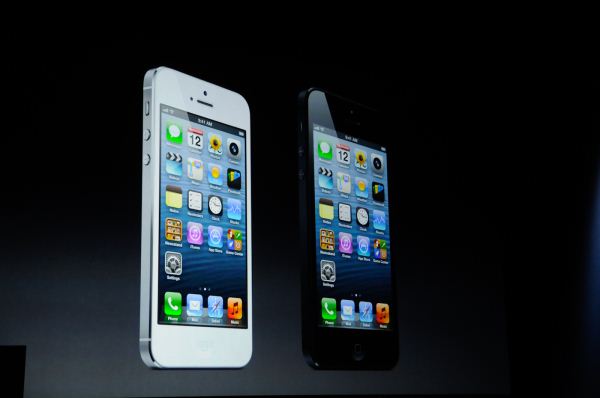
Apple announced its 6th generation iPhone, the iPhone 5, at a special event in San Francisco this morning. The iPhone 5 brings a huge list of improvements. Apple unexpectedly used the iPhone 5 to introduce its next-generation SoC: the A6.
Apple didn't say anything about core counts and clock speeds, but it did give us a good indication of performance: 2x faster CPU and GPU. Based on the performance gains, Apple's history of SoC naming and some other stuff we've heard recently, it looks like Apple has integrated two ARM Cortex A15 custom designed Apple ARMv7 cores on Samsung's 32nm LP HK+MG process. This is a huge deal because it means Apple beat both TI and Samsung on bringing A15s to market.
The GPU side isn't entirely clear at this point, but the 2x gains could be had through a move to 4 PowerVR SGX543 cores up from 2 in the iPhone 4S.
The new SoC is paired with Qualcomm's single-chip 28nm MDM9615 LTE baseband. Apple claims support for EDGE, EV-DO, HSPA, HSPA+, DC-HSDPA and LTE. The WiFi gets updated to dual-band 2.4GHz and 5GHz 802.11a/b/g/n, using 20MHz channels Apple can hit a peak link rate of 150Mbps over WiFi.
The display sees a big upgrade from 3.5-inches to 4-inches diagonally. The new resolution is 1136 x 640, same width but with a taller height (16:9 ratio). Legacy applications will be letterboxed until they are updated to support the added real estate. Within iOS the biggest change will be a fifth row of icons on the home screen; along with added content within apps like the calendar and Mail.
The camera saw an upgrade in silicon and software, though it seems to be the same optical package as the previous generation. Multiple stills will be integrated for better low light performance, in an all ISP solution. The package has been reduced in size by 25%, it's unclear whether that will have any effect on image quality, though. The software has been updated to included a panorama mode that yields 28MP images. Video performance on the front facing camera gets boosted to 720p and now bears that FaceTime HD moniker, while rear-facing video gets better image stabilization and face detection while shooting.
The iPhone 5 includes three mics, including support for beam forming. The ear piece also now features a noise cancelling feature. As expected there's a new dock connector: the 8-pin Lightning connector. The Lightning connector is reversible and significantly smaller than the previous 30-pin dock connector introduced in 2003.
Pricing hews to tradition, with configurations starting at 16GB and $199 and adding $100 to the price at each step up in storage (32GB and 64GB). The rest of the lineup shuffles its way down, with the iPhone 3GS being led of stage, and putting the iPhone 4S at $99 and the iPhone 4 gratis, all on contract of course. Preorders start September 14th and will be available in stores September 21st.
| Physical Comparison | |||||||
| Apple iPhone 4 | Apple iPhone 4S | Apple iPhone 5 | Samsung Galaxy S 3 | ||||
| Height | 115.2 mm (4.5") | 115.2 mm (4.5") | 123.8 mm (4.87") | 136.6 mm (5.38") | |||
| Width | 58.6 mm (2.31") | 58.6 mm (2.31") | 58.6 mm (2.31") | 70.6 mm (2.78") | |||
| Depth | 9.3 mm ( 0.37") | 9.3 mm ( 0.37") | 7.6 mm (0.30") | 8.6 mm (0.34") | |||
| Weight | 137 g (4.8 oz) | 140 g (4.9 oz) | 112 g (3.95 oz) | 133 g (4.7 oz) | |||
| CPU | Apple A4 @ ~800MHz Cortex A8 | Apple A5 @ ~800MHz Dual Core Cortex A9 | Apple A6 (Custom Apple ARM CPU) | 1.5 GHz MSM8960 Dual Core Krait | |||
| GPU | PowerVR SGX 535 | PowerVR SGX 543MP2 | PowerVR SGX 543MP3(?) | Adreno 225 | |||
| RAM | 512MB LPDDR1-400 | 512MB LPDDR2-800 | 1GB LPDDR2-1066 | 2GB LPDDR2 | |||
| NAND | 16GB or 32GB integrated | 16GB, 32GB or 64GB integrated | 16GB, 32GB or 64GB integrated | 16GB or 32GB NAND with up to 64GB microSDXC | |||
| Camera | 5MP with LED Flash + Front Facing Camera | 8MP with LED Flash + Front Facing Camera | 8MP with LED Flash + 720p Front Facing Camera | 8 MP with LED flash + 1.9 MP front facing | |||
| Screen | 3.5" 640 x 960 LED backlit LCD | 3.5" 640 x 960 LED backlit LCD | 4" 1136 x 640 LED backlit LCD | 4.8" 1280 x 720 HD Super AMOLED | |||
| Battery | Integrated 5.254Whr | Integrated 5.291Whr | Integrated ?? Whr | Removable 7.98 Whr | |||


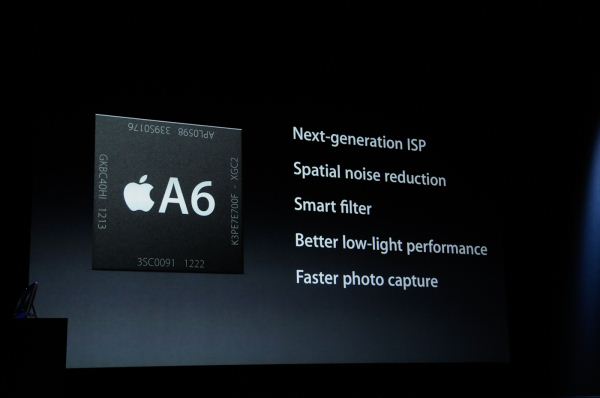
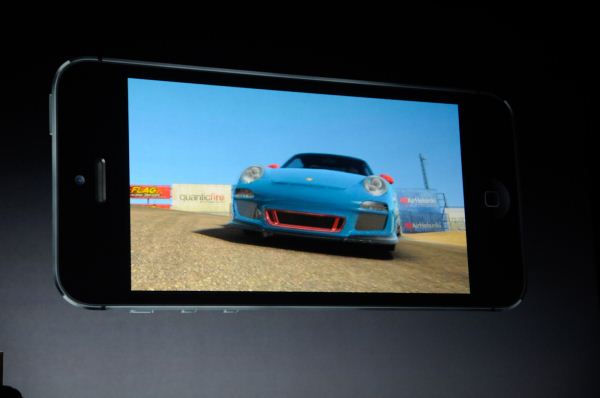
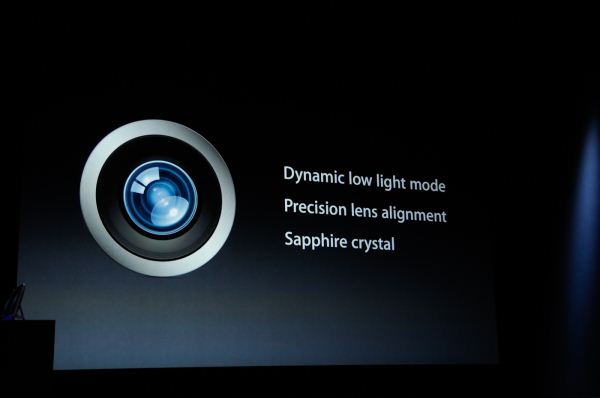
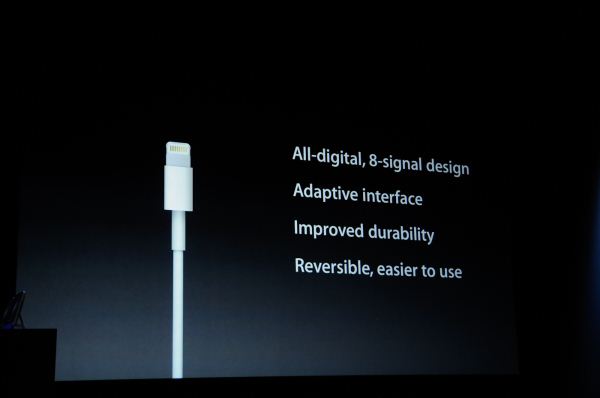








27 Comments
View All Comments
MrPhilo - Wednesday, September 12, 2012 - link
If it was the Cortex A15, I'm sure Apple will include that in its presentation since it'll be the first company to launch a A15, it is just a rebranded Exynos chip IMO, and a higher clocked GPU.EnzoFX - Wednesday, September 12, 2012 - link
I don't think so. However if it were quad core, that's easy to sell, "4 cores" is simple and easy. A15 doesn't mean a whole lot to the average user.pravin_tavagad - Wednesday, September 12, 2012 - link
A15 is much better and advanced architecture than A9.It is very power efficient and fast that event dual core A15 can easily beat quad core A9 in every aspect.
TI launched video comparing A15 and quad A9
http://www.youtube.com/watch?v=neayNcAQIXY
Gich - Wednesday, September 12, 2012 - link
Qualcomm does SoCs its own way, but at the end of the day isn't Krait an A15?lowlymarine - Wednesday, September 12, 2012 - link
Not quite. It's somewhere between A9 and A15, much like Scorpion was somewhere between A8 and A9. That said, dual-core Krait @ 1.5 GHz is still much more than twice as fast as dual-core A9 @ 800 MHz, so even taking Apple's statements at face value, this isn't going to top the frustratingly ubiquitous. MSM8960.Aenean144 - Wednesday, September 12, 2012 - link
Exynos GPUs will not have 2x the GPU power of the A5 GPU. It's either a SGX543MP4 or a Rogue 6x00 of some sort.This is an Apple SoC through and through, not a rebrand.
glenns - Wednesday, September 12, 2012 - link
I would be surprised if it is a15 bit we'll soon see1008anan - Wednesday, September 12, 2012 - link
Look forward to frequent updates Anand and Brian.Unrelated, how does Apple keep some of their SoC tech from being stolen by their fab Samsung? Strictly as a practical matter?
Any word yet that Apple might split SoC production between Samsung's 32nm LP HK+MG process and another foundry?
single-chip 28nm MDM9615 LTE baseband. What is the TDP on it?
lowlymarine - Wednesday, September 12, 2012 - link
What's to steal? Apple is a fabless licensee. They buy pre-designed CPU cores from ARM and pre-designed GPU cores from Imagination Technologies and slap them together. They aren't like Qualcomm, who design their own architecture that implements the ARMv7 instruction set; all they "design" is the interconnects.Or as I saw it put once: they don't "design" the Ax SoCs, they just create "layouts." The same is true of Samsung and TI, of course.
1008anan - Wednesday, September 12, 2012 - link
This is true of previous A series designs by AAPL. But Apple's ambition is to increasingly add their own customized IP.Let us see if A6 turns out to be rebranded A-15 Cortex designs almost straight from Arm without customization.
Brian and Anand, any comments?
I think you underestimate the amount of hardware customization that TXN does with OMAP that doesn't come from ARM. Not enough customization IMHO, but still.